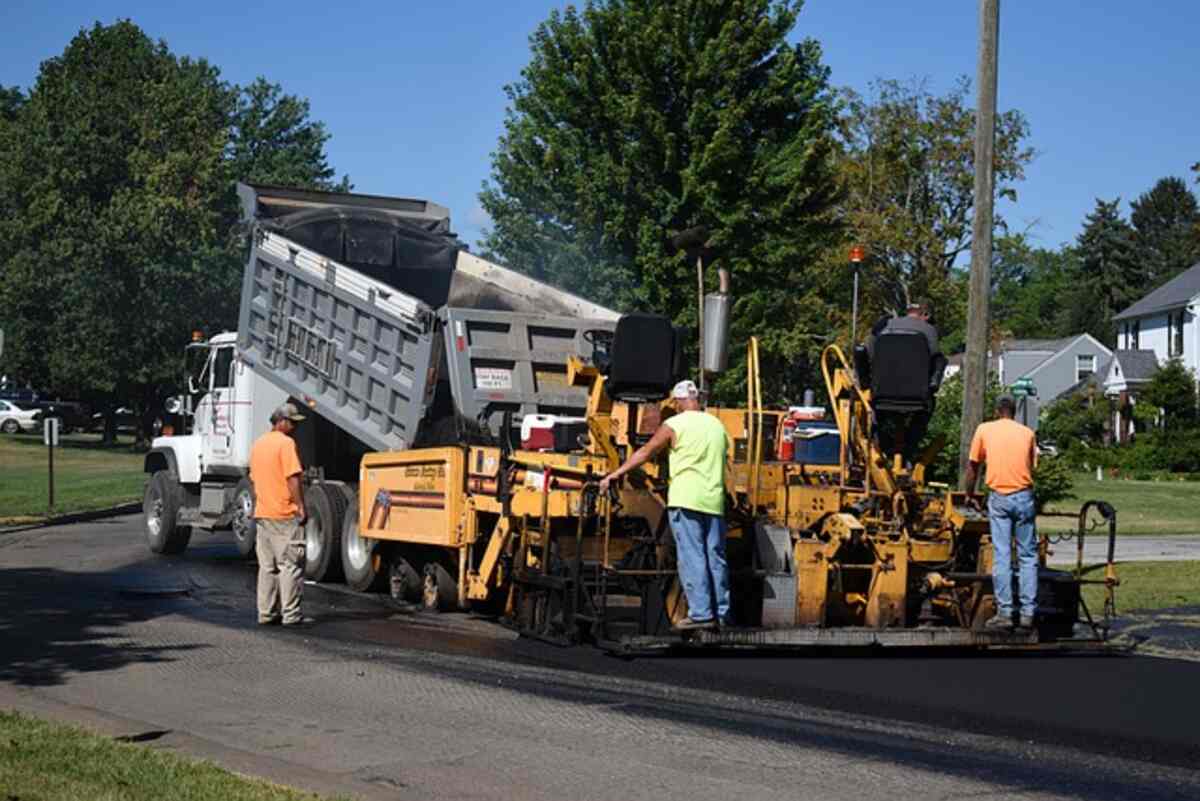Asphalt, concrete, and cement-based paving are used extensively across various construction projects. To produce it in its multiple forms requires mixing aggregates with water and cement in precise proportions. The best guide to finding Hometown Asphalt Paving of Greensboro.
Heavy traffic damages asphalt pavement, leading to rutting and cracking. With regular maintenance, however, lifespan can be extended by up to 40% by applying seal coating and fixing potholes as soon as they appear.
Strength
Concrete stands out as one of the critical differences between asphalt and concrete in terms of strength. A mixture of gravel, water, and cement is combined while still hot before pouring onto a hard surface to create a hard surface. Steel reinforcement bars are added for added strength. Once dry, however, concrete becomes strong enough to drive on.
The strength of pavements can be measured using their Structural Number (SN), which measures how much traffic the pavement can handle before failing. To determine its value, various tests such as:
Multiple factors can contribute to the strength of an asphalt mix, including:
Aggregate particles should be angular or nearly equidimensional to minimize surface area and avoid breakdown, while particle size must also be limited for effective binding to asphalt binder. Any detrimental materials like clay and shale must also be reduced as much as possible to prevent degradation or dispersion of binder.
Another factor affecting asphalt durability is its heat tolerance. High temperatures soften its asphalt binder, leading to soft spots in pavement that lead to damage. Low temperatures allow bitumen to bond with aggregate, increasing the strength of pavement material. Therefore, selecting a qualified contractor who uses appropriate temperatures during construction is essential.
Durability
Concrete is more rigid than asphalt, enabling it to withstand heavy traffic without cracking or losing shape, but it can become susceptible to structural failures that necessitate costly repairs and removal in wet or frost-susceptible ground conditions. Asphalt, on the other hand, is more flexible and easily patched or resurfaced after damage occurs.
Durability in asphalt depends upon its mix design, subgrade and subbase material composition, construction process, and weather conditions. More specifically, a compelling asphalt mix must have sufficient stiffness-to-deformation ratio (stiffness-to-deformation ratio; Marshall stability index (MSI); stripping resistance or stiffness.
A great asphalt mix must also be workable during application to achieve proper compaction and an even surface, essential components of creating smooth and long-term pavements. A low-temperature laying and drying process (hot mix asphalt, HMA) should be employed in order to protect aggregates from becoming saturated with moisture during mixing or paving processes.
Asphalt’s durability also lies in its heat resistance. Asphalt absorbs sunlight quickly, then releases it slowly back out again – meaning it can get up to 10 degrees hotter than concrete in similar weather conditions. As such, you should avoid wearing flip-flops or other footwear with thin soles when walking on asphalt and avoid walking your pets during summer as this could blister their paws.
Heat Resistance
Asphalt is an effective thermal insulator but can still get very hot when exposed to sunlight during midday hours. Therefore, wearing proper footwear when walking on asphalt at this time of day is recommended for your safety and to prevent blisters.
Various cool pavement concepts aim to control asphalt temperature by increasing albedo (the amount of light reflecting off its surface), making it more reflective or evaporative, or holding water longer; however, their widespread implementation outside laboratory settings has yet to happen due to potential glare hazards or environmental concerns.
An alternative approach for improving asphalt’s thermal conductivity involves substituting some of its mineral filler with advanced carbon materials like graphene (Gr) or carbon nanotubes (CNTs), which have proven highly conductive and corrosion resistant due to their dense structures and strong hybridization between sp2 and sp3 atoms.
To achieve optimal performance from asphalt paving mixtures, their thermal, physical, and rheological properties must be simultaneously optimized. As such, this research seeks to investigate how Gr or CNTs affect MA stiffness and fatigue strength under four-point loading conditions with HMA mixes; significant enhancement of these properties was discovered without significantly impacting the basic usability of asphalt mixtures.
Customization
Concrete isn’t limited to being a road material – it can also be used to pave patios, driveways, sidewalks, and more! This versatile material comes in an assortment of colors, textures, and shapes to meet any design requirement – plus, its simplicity makes decorating it much more straightforward than asphalt, with options such as stenciling and color additives to choose from.
Concrete paving may cost more than asphalt but provides excellent durability and flexibility, which makes it the superior choice in areas subject to heavy traffic. Concrete also allows water drainage through its surface as opposed to asphalt, which causes standing water that damages pavement over time.
Asphalt comes in many varieties designed for specific uses; HMA mixes are specifically used on highways and roads due to their load-bearing capacities; cold mix solutions provide less dense patches ideal for patching less-trafficked roads.
Asphalt’s ease of repair makes it an attractive option in terms of both cost and speed of repair, making it superior to concrete in terms of environmental friendliness; asphalt can be 100% recycled, while concrete must be sent offsite to be processed by special facilities.

